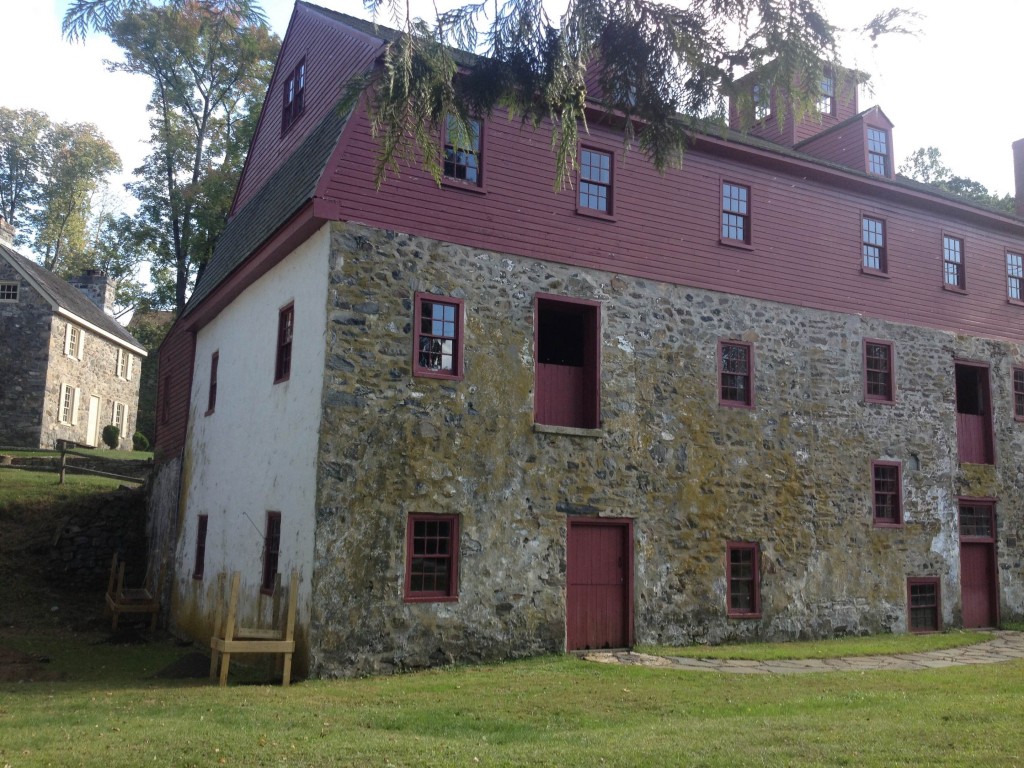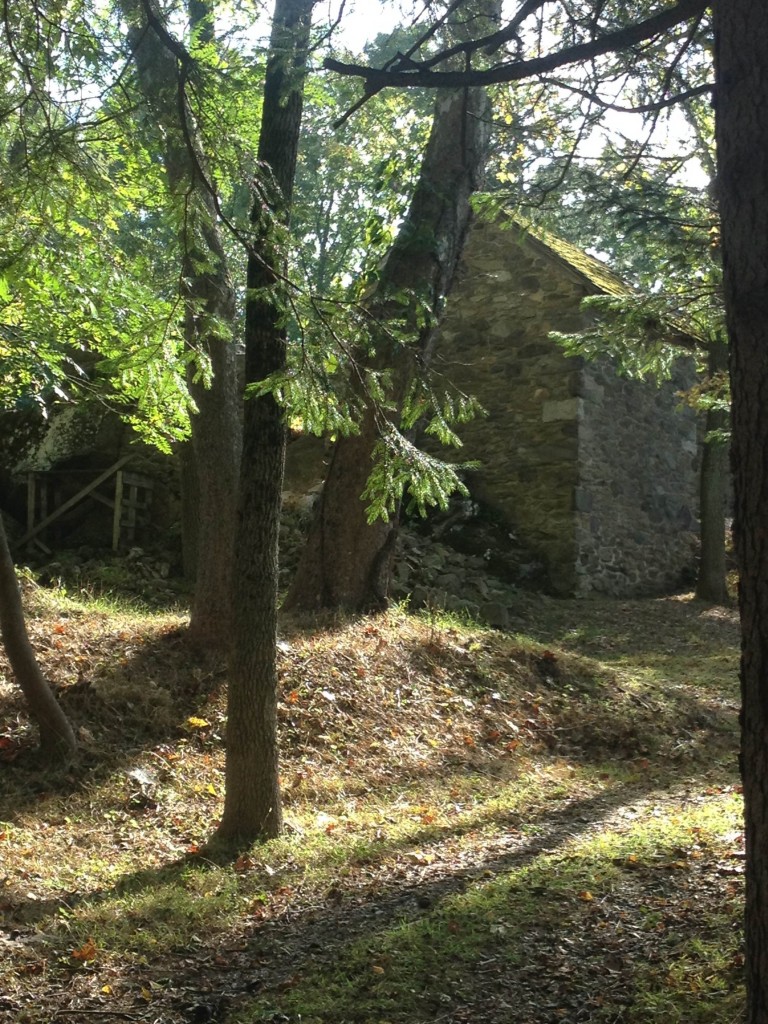Theory in Practice: a Furnishing Plan for the Newlin Grist Mill
The miller’s house at the Newlin Grist Mill, built in 1739
How would a Pennsylvania miller have furnished this house circa 1740?
A straightforward enough question, perhaps, but one that brings up a host of related issues: what sorts of items could have been in this house? What would the miller’s family have thought that they needed? How did utility and necessity interact with taste and style? How did the family inhabit the house, and what kinds of values and uses would they have applied to the spaces? How did interior spaces reflect individuality and identity?
Questions like these are at the heart of material culture studies. For the class of 2017, our first in-depth opportunity to work through them came as a Summer Institute project: developing a furnishing plan for the miller’s house at the Newlin Grist Mill.
Newlin Grist Mill. The miller’s house is visible to the left.
The Newlin Grist Mill was built by Nathaniel Newlin in 1704 in Glenn Mills, Pennsylvania. A place for area farmers to turn their grain into flour or sell it into a larger market, the Newlin Mill would have been an economic and social hub for Concord Township.[1] In 1739, the Newlin family decided to hire a miller to run the day-to-day operations. To attract better talent, they built a two-story, four-room house adjacent to the mill to house the new miller and his family.
Our goal was to develop a furnishing plan for the miller’s house, representing the period between 1740 and 1765. The house is already furnished with a collection of period pieces acquired by Elizabeth Newlin in the 1960s, but director Tony Shahan is hoping to update the interior to be more historically specific to the site, to make the house look lived in, and, if possible, to incorporate hands-on spaces. Our plan needed to address all these concerns in a manner that the Newlin Mill could feasibly implement.
A portion of Chester Creek, which still provides water power for the grindstones at the Mill
Pulling together such a plan was both an opportunity to try out ideas about forming and using museum space and a lesson in the limitations imposed by the site or organizational needs, all mediated by the specific historic context. Showing a kitchen, for instance, was tempting from an interpretive standpoint, as a kitchen is easily relatable, relatively hands-on, and draws in diverse themes like local foodways, international trade, and domestic labor. However, on-site archaeological digs suggest that the kitchen may have originally been located in a separate outbuilding. We had to adjust our interpretive hopes to the historic reality.
A stone outbuilding on the Newlin property.
Other questions revolved around decisions that the as-yet anonymous miller may have made. The location of the best bed in the house was one such example. Historical sources suggest that the best bed was often located in the parlor, a first floor room used for both entertaining and sleeping. However, families that built modern, two-story houses like this one were more likely to ascribe to the new (and to us, more familiar) plan of separating sleeping from living space by placing the beds on the second floor.[2] The mid-eighteenth century was a transition period: on which side of the transition would the miller have fallen? We had to interpret the miller to interpret the house.
The true test of our plan is still in the future, as the Newlin Mill staff and directors decide what elements to implement. Nevertheless, it was an excellent introduction to the questions that motivate material culture in theory, and the issues that restrict it in practice.
By Elisabeth Meier, WPAMC Class of 2017
[1]Diane Wenger, “Delivering the Goods: The Country Storekeeper and Inland Commerce in the Mid-Atlantic,” The Pennsylvania Magazine of History and Biography 129 no. 1 (January 2005): 55.
[2] Catherine Thomas Masetti, Bed Form and Placement in Chester County, Pennsylvania, 1683-1751 (M.A. Thesis, University of Delaware, 1987): 32-33, 38.





Leave a Reply